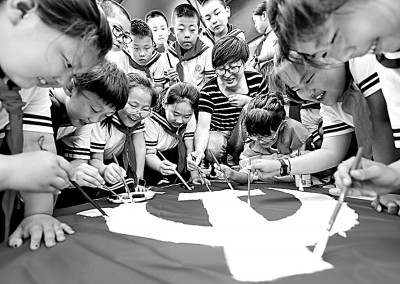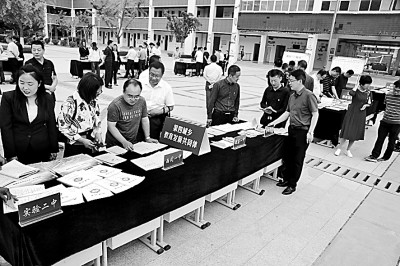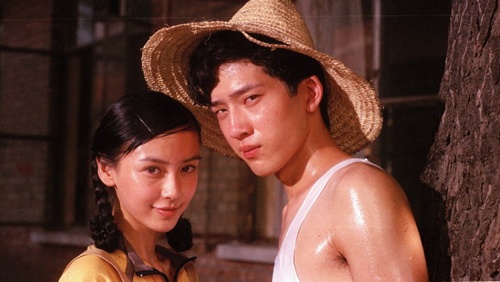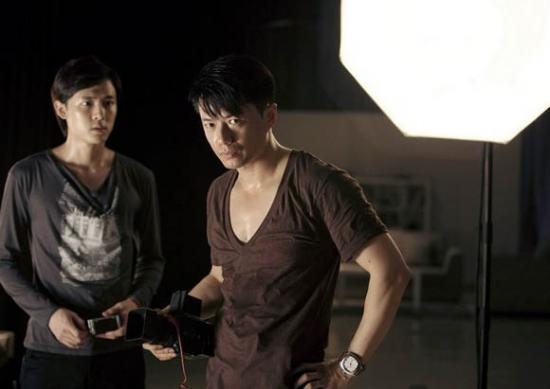
In the first three quarters of this year, China’s economic situation improved steadily, the order of production and life gradually improved, economic growth turned from negative to positive, and employment, exports and new consumption performed brilliantly. However, we must also see that the current global epidemic situation is still spreading, and there are still many unstable and uncertain factors in the international development environment; The employment situation has obviously improved, but the employment pressure is still relatively high; The consumer market has accelerated its recovery, but the demand is still weak … … This requires further strengthening policy support for key areas and weak links in order to better accomplish the objectives and tasks of economic and social development throughout the year.
Wen Bin, chief researcher of China Minsheng Bank:
China’s economy has the foundation of sustained recovery.
Our reporter Peng Jiang
On October 19th, the National Bureau of Statistics released the main economic data for the first three quarters of 2020. Wen Bin, chief researcher of China Minsheng Bank, said that in the first three quarters, in the face of the unprecedented impact brought by the COVID-19 epidemic and the complicated and changeable domestic and international environment, China made overall plans to promote epidemic prevention and control and economic and social development, solidly carried out the work of "six guarantees", fully implemented the task of "six guarantees", accelerated the recovery of production and living order, and achieved positive results in economic recovery. In the third quarter, China’s GDP increased by 4.9% year-on-year, and accumulated by 0.7% in the first three quarters. The main features can be roughly summarized as follows:
First, GDP growth has accelerated. In the third quarter, the year-on-year growth rate of China’s GDP rose by 1.7 percentage points to 4.9% compared with the second quarter, and the cumulative year-on-year growth rate rose by 2.3 percentage points compared with the decrease of 1.6% in the first half of the year, reaching an increase of 0.7%, reversing the decline since the outbreak.
The second is the optimization of GDP structure. The final consumption expenditure on GDP rose from a negative 2.3 percentage points in the second quarter to a positive 1.7 percentage points; The total amount of capital formation decreased from 5 percentage points to 2.6 percentage points. The net export of goods and services rose from a positive pull of 0.5 percentage points to 0.6 percentage points. It can be seen that the accelerated recovery of consumption has promoted the role of "ballast stone" in the economy, and it is not easy for net exports to pull a steady and slight increase.
Third, the positive factors are increasing. The recovery of major economic indicators has been accelerated, and at present, more and more indicators have turned positive. At the production end, the cumulative growth rate of industrial added value turned positive; On the demand side, the cumulative growth rate of investment and total import and export of goods turned positive. Production demand has gradually picked up, and the confidence of market players has been continuously enhanced, which has promoted the continuous improvement of employment and people’s livelihood.
Wen Bin believes that from the current situation of domestic epidemic prevention and control, the performance of economic recovery, the vitality and confidence of market players, China’s economy has the conditions and foundation for continued recovery in the next stage, and GDP is expected to increase by about 2% throughout the year. However, we should also see that the current global epidemic situation is still spreading, and the international development environment still has many unstable and uncertain factors. We need to be ready to meet the challenges at any time, consolidate the foundation for sustained recovery, further increase policy support for key areas and weak links, and strive to achieve the goals and tasks of economic and social development throughout the year.
Wen Bin suggested that in terms of fiscal policy, we should continue to implement policies such as tax reduction and fee reduction to reduce the burden on enterprises. Further accelerate the use of local government special debt funds. In terms of monetary policy, we should continue to play the role of structural policy, maintain a reasonable and abundant liquidity through a variety of policy combinations, increase medium and long-term credit support for manufacturing, small and medium-sized enterprises, promote the further decline of real loan interest rates, and ensure the completion of the target task of making profits of 1.5 trillion yuan for the whole year.
Chen Li, Chief Economist of Chuancai Securities:
New infrastructure drives investment recovery
Our reporter Wen Jicong
According to the latest data released by the National Bureau of Statistics, in the first three quarters of this year, new infrastructure such as 5G construction and rail transit performed well.
Chen Li, chief economist of Chuancai Securities, said that at present, the domestic COVID-19 epidemic situation has gradually stabilized, but the international epidemic situation is still grim. Under the influence of the epidemic, economic growth is seriously lacking in demand power, and through new infrastructure investment, it is expected to further stimulate the production end, lead the economy out of the predicament and achieve new growth.
In September, the year-on-year growth rate of computer, communication and other electronic equipment manufacturing industries achieved rapid growth, while the high-tech manufacturing industry and equipment manufacturing industry grew rapidly. The supporting role of infrastructure in domestic demand drove the demand for industrial products to pick up continuously. Under the impact of the epidemic, the driving force of industrial transformation and development has obviously accelerated. The new kinetic energy represented by the Internet economy has grown against the trend, which has played a very positive role in helping epidemic prevention and control, ensuring residents’ lives and promoting economic growth.
Chen Li said that in the short term, China’s fixed asset investment continued to pick up in the third quarter as a whole, and the rapid development of new infrastructure could not be ignored. On the one hand, the scale of local special bonds has been large and the issuance speed has been fast since this year. The acceleration of the issuance of local special bonds will drive infrastructure investment, and the proportion of new infrastructure investment in infrastructure investment is increasing. On the other hand, new infrastructure can also play a pulling role in traditional infrastructure. At present, all parts of the country intensively formulate new infrastructure investment plans, but it is also inseparable from the support of supporting facilities of traditional infrastructure.
In the long run, the development of new infrastructure is also in line with the national strategic development plan. This year, under the influence of the epidemic, with the counter-cyclical adjustment policy, new infrastructure has also entered a stage of rapid development. In April this year, the National Development and Reform Commission (NDRC) made clear the scope of implementation of new infrastructure at a press conference. New infrastructure such as photovoltaic, energy storage, power grid, and third-generation semiconductors are expected to be included in the "Tenth Five-Year Plan". By then, policy support will provide guarantee for the development of new infrastructure.
New infrastructure is the infrastructure support of new economy, new technology and new industry in the future, which guides the development direction of China’s science and technology industry. For the new infrastructure, we should not only focus on the short-term economic pulling effect of short-term investment scale, but also base on the long-term layout. At present, new infrastructure is mainly divided into three categories: first, communication network infrastructure represented by 5G, Internet of Things and industrial Internet; The second is the new technology infrastructure represented by artificial intelligence, cloud computing and blockchain; The third is the computing infrastructure represented by data centers and intelligent computing centers. From the field of science and technology to the field of people’s livelihood, new infrastructure is closely related to everyone’s life. The development of new infrastructure is expected to promote the transformation and upgrading of China society in the direction of digitalization, informationization and intelligence.
Liu Feng, Chief Economist of china galaxy Securities:
The employment situation has improved, but the pressure remains.
Our reporter Zhu Huichun
In the first three quarters of this year, 8.98 million new jobs were created in cities and towns. In September, the national urban unemployment rate dropped from a high of 6.2% at the beginning of the year to 5.4%.
"The employment situation has obviously improved and the employment of key groups has improved." Liu Feng, chief economist of china galaxy Securities, said in an interview that in the third quarter, China’s economy continued to recover and various economic indicators improved significantly, which laid an important foundation for employment stability. Since the outbreak of the COVID-19 epidemic, in the face of unprecedented employment pressure, the first requirement of the "six stability" put forward by the central government is "stable employment". All regions and departments have fully implemented the employment priority policy and continuously increased investment in people’s livelihood, which has significantly improved the employment situation.
Liu Feng believes that although the employment situation has obviously improved, the employment pressure is still relatively large. As a reflection of the relationship between supply and demand in the labor market, the employment problem still needs to be focused on and should not be underestimated.
First, the employment recovery in labor-intensive industries is slow. The epidemic has had a serious impact on some industries, especially the tertiary industry. At the end of the third quarter, the number of rural migrant workers was 179 million, an increase of 2 million compared with the end of the second quarter, but the total number at the end of the third quarter decreased by 3.84 million compared with the same period of the previous year, down by 2.1%. Although the national urban survey unemployment rate in September was 0.2 percentage points lower than that in August, it only represented the average level. Due to the different characteristics of various industries, especially labor-intensive industries, such as catering, tourism, transportation, etc., employment recovery is still slow.
Second, the employment pressure of graduates still needs to be eased. In September, although the unemployment rate of people aged 20 to 24 with college education or above dropped by 2.4 points from last month, it increased by 4 percentage points from the same period last year. In September, the employment pressure of domestic college graduates is still very high. Affected by the epidemic, many enterprises suspended recruitment, and overseas graduates also faced severe employment situation.
Third, affected by many factors such as epidemic situation, small and medium-sized enterprises are facing the greatest impact and cannot solve the expected labor employment problem in the future. Therefore, it is necessary to further alleviate the employment pressure through measures such as helping enterprises to bail out difficulties and encouraging flexible employment.
Fourth, at present, the focus of stabilizing employment is to eliminate the impact and influence of the epidemic, to restore employment and to provide relief and resettlement for the unemployed.
Liu Feng said that many new industries and formats have begun to emerge in China, which requires a large number of new knowledge-based workforce, and it is necessary to increase the scale and intensity of vocational education and training for on-the-job personnel. At the same time, universities and other full-time secondary and technical colleges should keep pace with the times, constantly adjust and improve the teaching content and methods, and provide more and better human resources for the society.
Ma Tao, chief strategist of Bank of Communications Schroeder Fund:
Manufacturing industry runs better than expected.
Our reporter Zhou Lin
In the third quarter, China’s GDP growth rate rebounded to 4.9%, which continued to repair compared with the level of 3.2% in the second quarter. The cumulative growth rate in the first three quarters has turned positive. Among them, the single-season growth rate of the primary and secondary industries has been restored to the pre-epidemic level in COVID-19, and the tertiary industry is still under pressure.
Ma Tao, chief strategist of Bank of Communications Schroeder Fund, said in an interview that one of the highlights of the economic data in the first three quarters was that the toughness of import and export drove the manufacturing industry to run better than expected.
In the first three quarters, China’s total import and export volume of goods increased by 0.7% year-on-year, and the growth rate has turned from negative to positive during the year. In September, the total import and export volume increased by 10.0%, exports by 8.7% and imports by 11.6%. The import and export of foreign trade rebounded quarter by quarter, the export of mechanical and electrical products and epidemic prevention materials maintained rapid growth, and the import of major commodities and key agricultural products maintained rapid growth, showing the characteristics of booming import and export. The net export of goods and services boosted China’s GDP growth by 0.6 percentage points in the third quarter, reaching a historically high level. The import and export boom boosted the industrial added value to 6.9% in September, reaching the highest level since 2018. Among them, the added value of high-tech industries increased by 7.8% year-on-year, electrical machinery and equipment increased by 15.9% year-on-year, and electronic equipment and general equipment manufacturing increased by 8% and 12.5% year-on-year. In the third quarter, the industrial capacity utilization rate rebounded to 76.7%, and the manufacturing capacity utilization rate reached 77.2%, returning to the historical high level; Investment in manufacturing continued to recover, and investment in high-tech industries, enterprise automation transformation and equipment investment flourished. The cumulative growth rate of industrial added value of general equipment and special equipment reached 2.6% and 5.1% respectively, and the output of industrial robots increased by 18.2%.
In the first three quarters, China’s trade surplus has reached 2305.4 billion yuan. The accumulation of trade surplus and the reduction of service deficit have led to a significant accumulation of current account surplus, which has promoted the appreciation of RMB exchange rate and increased the scale of foreign exchange assets in the commercial banking system.
Because China took the lead in controlling the epidemic, the industrial categories and industrial chains were complete, and the progress of resumption of work and production was leading the world. Therefore, under the global epidemic, imports and exports strengthened against the trend, and the global share of trade continued to increase, supporting the recovery of the real economy.
Ma Tao predicted that the economic data in the fourth quarter is expected to remain stable and positive, and China is expected to become the only economy in the world that has achieved positive growth due to the epidemic.
In the fourth quarter, import and export remained an important driving force to support the economy, driving industrial production, related employment and manufacturing investment to maintain and repair. The solid fundamentals created favorable conditions for continuing to maintain a normalized and stable monetary policy, accelerating the transformation of old and new kinetic energy and resolving financial risks.
Hua Changchun, global chief economist of Guotai Junan Securities Research Institute:
New consumption stimulates economic growth momentum
Our reporter Wen Jicong
In the first three quarters of this year, the total retail sales of social consumer goods was 273.324 billion yuan, down 7.2% year-on-year, and the decline was 4.2 percentage points narrower than that in the first half of this year; Among them, the growth rate in the third quarter was 0.9%, and the quarterly growth rate turned positive for the first time in the year.
According to Hua Changchun, global chief economist of Guotai Junan Securities Research Institute, residents’ income and willingness to consume have boosted consumer demand.
With the major strategic achievements in epidemic prevention and control, the income and consumption willingness of Chinese residents continued to rise, which became the main kinetic energy for economic recovery in the third quarter. In September, food and beverage, textiles and clothing and new consumption rose sharply. It should be pointed out that the oil and products and some communication equipment that dragged down the social retail in September were mainly short-term factors, the former was affected by price, and the latter was affected by product upgrading. Therefore, if these short-term factors are excluded, the recovery of consumption kinetic energy will be more significant.
It is noteworthy that new formats, new models and new products have driven the rapid growth of new consumption. Hua Changchun said that new consumption mainly refers to the combination of new formats and new products, so sub-industries such as catering, transportation, education, consumer electronics, leisure and entertainment can also involve new consumption content. If online physical and non-physical retail sales account for zero, new consumption accounts for about 25%.
From the perspective of new consumption patterns, e-commerce shows a trend of contrarian growth. In the first three quarters, the online retail sales of physical goods increased by 15.3% year-on-year, accounting for 24.3% of the total retail sales of consumer goods. In the process of epidemic prevention and control, online consumption has played an important role in safeguarding people’s livelihood and even stimulating economic growth. With the change of people’s consumption habits, the penetration rate of e-commerce consumption is increasing, and the new consumption pattern still has a strong growth trend in the medium and long term.
The new kinetic energy represented by the Internet economy has grown against the trend, which not only helps to prevent and control the epidemic, protect residents’ lives and promote economic growth, but also shows that the driving force for China’s industrial transformation and development has obviously accelerated. Online shopping, live delivery and other new formats and models continue to be hot, and emerging needs such as online office, remote consultation and online education are very strong. All these have promoted the proportion of online retail of physical goods in the whole social retail. In addition, the output of smart watches increased by more than 70% in September, and the output of new energy vehicles increased by more than 50%, indicating that the demand for new products is very strong.
Hua Changchun believes that after the epidemic prevention and control enters the normalization stage, new consumption and new kinetic energy will lay a solid foundation for China’s economic transformation and development. New economy such as new consumption is helpful to promote economic growth in the short term, but its greater significance lies in improving total factor productivity and long-term economic growth momentum. The new economy has long-term significance in reducing costs, energy consumption and creating new wealth.
Tang Jianwei, Chief Researcher, Bank of Communications Financial Research Center:
Differentiation of low price operation trend
Our reporter Peng Jiang
Recently, the National Bureau of Statistics has successively released the main economic data of the first three quarters. Tang Jianwei, chief researcher of the Bank of Communications Financial Research Center, said that the data in the third quarter showed that the current price trend showed differentiation characteristics, in which CPI went down and PPI rebounded.
Tang Jianwei pointed out that in the first three quarters, CPI experienced a rapid decline after a year-on-year surge. In January, the increase of 5.4% became the highest point in the whole year. Since then, the year-on-year increase of CPI has dropped month by month. Although it rebounded slightly in the middle of the year, the increase has continued to fall. In September, the CPI rose by 1.7% year-on-year.
The significant narrowing of food price increase is the main reason for the decline of CPI. The year-on-year increase in food prices dropped from the highest of 21.9% in February to 7.9% in September, down by 14 percentage points. The year-on-year pull of food prices on CPI dropped from 4.84% in February to 2% in September, down by 2.84 percentage points. The sharp drop in pork price increase is the main reason for the narrowing of food price increase. With the steady increase in the number of live pigs and the high pork price base in the second half of last year, the year-on-year increase in pork prices dropped sharply from the highest of 135.2% in February to 25.5% in September this year. The year-on-year pull of pork prices on CPI also dropped from the highest level of 3.19% in February to 1% in September.
Tang Jianwei said that non-food prices and core CPI remain at a low level, indicating that consumer demand is still weak. Excluding food prices, the price level remained at a low level, and the year-on-year increase of non-food prices dropped from 1.6% in January to 0% in September, which has been below 0.5% for six consecutive months. The core CPI has remained at 0.5% for three consecutive months, indicating that consumer demand is still weak.
Tang Jianwei predicts that CPI in the fourth quarter may remain in the "1 range" year-on-year. First, pork prices are likely to enter the down cycle; Second, the hikes will drop significantly, with an average of 3.34% in the first half of the year, 1.14% in the second half and only 0.13% in the fourth quarter. Third, the core CPI has been running at a low level, and insufficient demand will still curb price increases.
Tang Jianwei pointed out that since the beginning of this year, PPI has experienced a continuous decline in the first half of the year and began to slowly pick up in the second half. It is expected that PPI will continue to rebound in the fourth quarter. The reasons are as follows: First, after the international epidemic situation improves, the prices of bulk commodities such as international oil prices may rebound; Second, the acceleration of domestic infrastructure has supported PPI. It is expected that PPI will continue to rebound in the fourth quarter, but the year-on-year growth rate is unlikely to turn positive.
Tang Jianwei believes that overall, there was no obvious inflationary pressure during the year. Although the fall in food prices has led to a decline in CPI, as demand is gradually recovering, it is unlikely that CPI will further drop to negative value, and there is no obvious deflation. Price will not become the main concern of macro-policy during the year.













